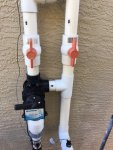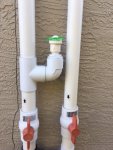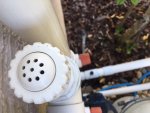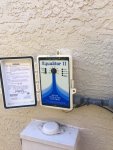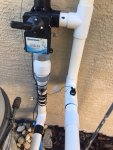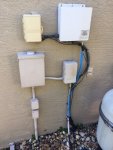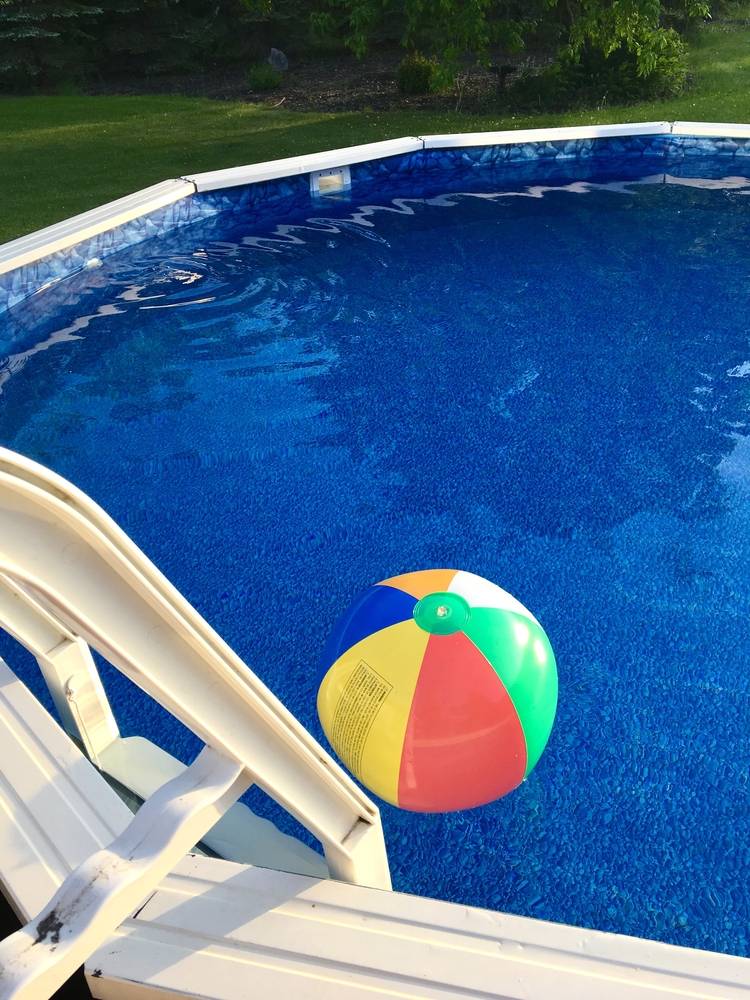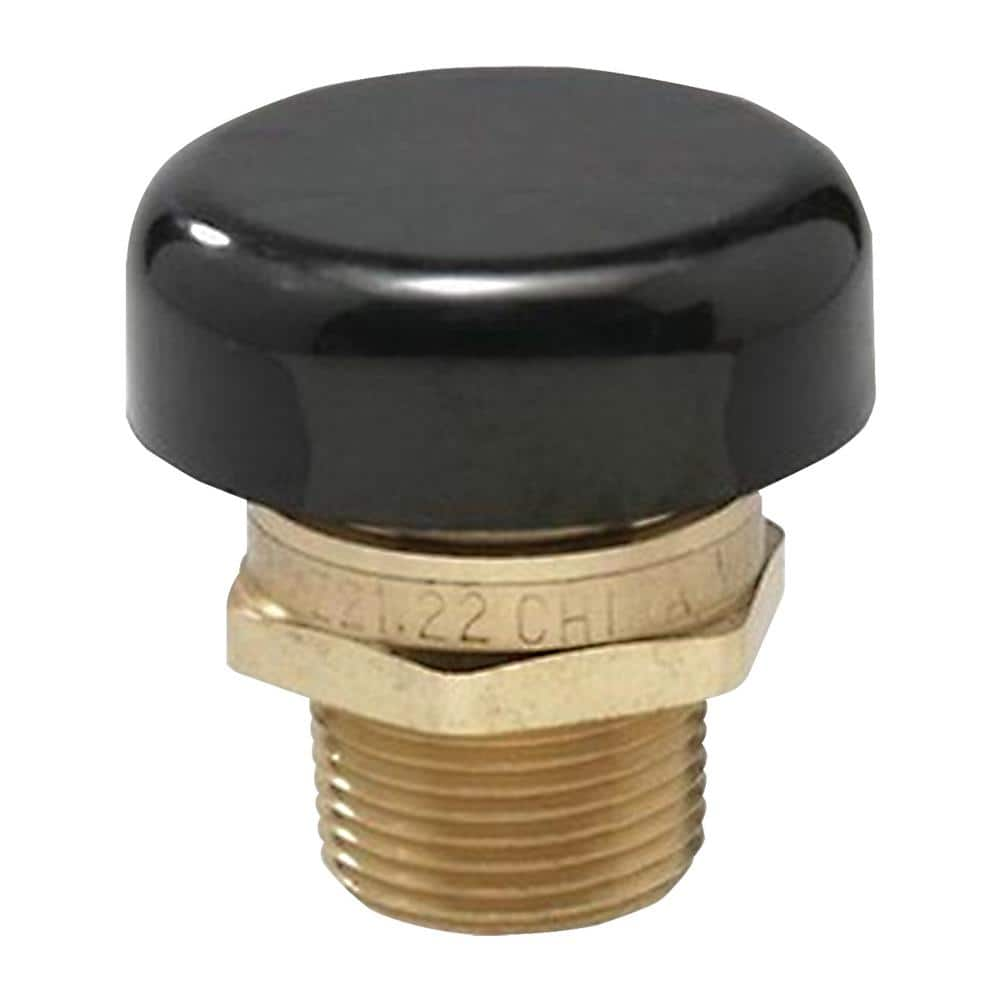Hey AAB! Can I call you AB for short?

As Allen points out, that is your vacuum breaker and it's probably in a bad spot. I'm not sure if that's why it's leaking, but you might be better off just replacing it when you move it.
It doesn't need to be at the highest point of your solar system. I recall it needs to be at least 6' from the ground, but higher is better. I placed mine just under my roof eve, so about 10' from the ground, so that it could stay out of the sun. They're PVC, and the less UV on it the better, the longer it'll last. So I'd say purchase a new one, and a new PVC tee and elbow, along with whatever PVC reducers and adapters to recreate the setup you have now. Just take the new breaker down to Lowes or HD and put together what you need. Be sure you buy PVC schedule 40 pressure fittings, NOT DWV fittings. I you don't know the difference, we can help you with that. Then cut the pipe up by the roof (or wherever you decide to move it to) and cut out the old one at the same time. Use couplers and lengths of PVC pipe and PVC primer and glue (solvent) to put everything back together. Lowes sells 2' lengths of PVC, so that should be enough. That's assuming you have some DIY PVC experience. If not, if you buy the parts, a local pool guy could glue it up for you in 10 minutes.
Now if you really want to future-proof your system, I would use this same "remodel" opportunity to get rid of those two PVC ball valves. The ones with the red handles. They will eventually fail, if they haven't already. They'll either cease to work well, or at all, or they'll seize up or start leaking, or all of the above. Those are your solar isolation valves, and they're not really needed in Florida. They're used to isolate the rooftop plumbing and the solar panels from the rest of your pool plumbing. You might need that if you had freezing temps for long stretches, or maybe for some sort of obscure repair situation. But the GVA-24 and a proper check valve will isolate just as well, neither of which will give you problems down the road like those two ball valves will. This is how my system is plumbed. I don't have, and don't need, won't ever need, isolation valves. So...
When you cut out the old vacuum breaker, cut out the ball valve, too, and replace both with straight pipe. When you cut below the ball valve, cut right up next to the valve, that will leave you enough pipe coming out of the GVA-24 to glue on a PVC coupler. That'll take care of the left side.
On the right side, cut out the ball valve and replace it with one of these. Be sure you get the correct size for the pipe you have:
Amazon.com : 2 Pack of Jandy 7305 Pool/Spa Plumbing Swing Check Valve 2''-2.5'' by CMP 25830-714-000 : Patio, Lawn & Garden
www.amazon.com
I've led you to a pair of those, because you might need to replace a second one. Can you post some pics of the rest of your equipment pad? We're looking for a check valve that goes between your filter and the solar valve (the GVA-24). I think I see one just below the GVA-24, but it looks to be an inferior one, which would go along with the cheap ball valves the original plumber used. So if that is the case, you might buy two Jandy check valves and upgrade all of that at the same time. I can tell better with more pics...
IMPORTANT: Whenever you work on your pool pad, especially when replumbing anything, turn off all the circuit breakers to everything on your pad. You don't want anything firing up inadvertently while you have your plumbing apart.
OK, not exactly what you asked. Regarding the GVA-24 operation: Typically your solar valve will be controlled by a solar controller, along with water and air temperature sensors, that calculate when to turn that valve open and closed to best heat your pool. The controller will likely be mounted on the wall near the pad somewhere, so take some pics of that, too, please. If there is a door, open it and take some pics of the insides, too. It'll have some wires coming out of it. One for power, one to the GVA-24, and two more, one to each temp sensor. One of the sensors will be on the roof. The other will be embedded into one of the PVC pipes somewhere on you pad.
Let's get some pics of all that and go from there...


